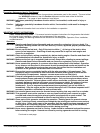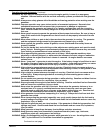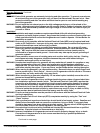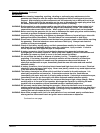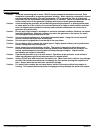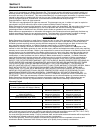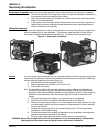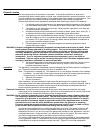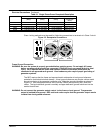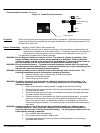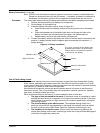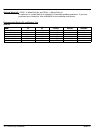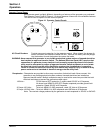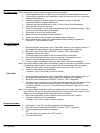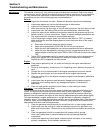
3-2 Receiving & Installation MN2412
Physical Location
The mounting location of the system is important. It should be installed in an area that is
protected from direct harmful gases or liquids, dust, metallic particles, shock and vibration. It can
only be installed in an outdoor location so the exhaust fumes are vented to the atmosphere. This
system must never be installed inside an enclosed building, home, shop or garage etc.
Several other factors should be carefully evaluated when selecting a location for installation:
1. For effective cooling and maintenance, the generator should be mounted on a flat, smooth,
non-flammable level surface. A concrete pad is ideal and provides a secure installation.
2. The location for the generator must be dry. Never operate a generator in an area that
has standing water or puddles.
3. Installation should prevent obstructions by buildup of leaves, grass, sand, snow, etc. It
is important that the unit be operated in a reasonably clean environment.
4 All engines give off considerable heat when running. The engine in your generator set
uses air to keep it cool so it is important that the ambient temperature is cool and does
not exceed 100"F (even while it is running). Where natural ventilation is inadequate a
fan to boost circulation should be used.
5. Exhaust gases from internal combustion engines are extremely poisonous. Never
operate an engine indoors.
WARNING: Exhaust fumes/gases are extremely dangerous and can cause severe illness or death. Never
breath exhaust fumes produced by a running engine. Only run the engine outdoors where
ventilation is plentiful. Exhaust gases contain carbon monoxide, a colorless, odorless and
extremely dangerous gas that can cause unconsciousness or death. Symptoms of carbon
monoxide poisoning include: dizziness, nausea, headaches, sleepiness, vomiting or
incoherence. If you or anyone else experiences these symptoms, get out into fresh air
immediately. Stop the engine and do not restart the engine until it has been inspected and if
necessary repaired or reinstalled in a well ventilated area.
6. All electrical equipment should be protected from excessive moisture. Failure to do so
will result in deterioration of the insulation and may result in short circuits and a
possible electrocution hazard.
Installation
The generator is completely assembled, tested and adjusted at the factory before it is shipped to
you. External connections required at the time of installation are:
Note: The generator is shipped dry. This means no oil is in the engine crankcase and no battery
is installed. You must refer to the engine manual and obtain the correct type and quantity
of engine motor oil and the correct battery (if equipped for electric start).
1. Electrical Connections.
2. Ground Connection.
After installation, the post installation checks must be performed prior to starting the engine.
After these checks have been performed and the system operation is verified to be good, refer to
Section 6 Maintenance for periodic checks that must be performed at scheduled intervals to
ensure continued operation with minimal problems.
Electrical Connections All load connections are made at the panel using electrical cords with the proper
mating plug for the receptacle being used. More than one receptacle can be used as long as the
total load does not exceed the continuous rating of the generator.
WARNING: Never connect this generator to any buildings electrical system unless a licensed electrician
has installed an approved transfer switch. The National Electrical Code (NEC) requires that
connection of a generator to any electrical circuit normally powered by means of an electric
utility must be connected by means of approved transfer switch equipment so as to isolate
the electrical circuit from the utility distribution system when the generator is operating.
Failure to isolate the electrical circuits by such means may result in injury or death to utility
power workers due to backfeed of electrical energy onto the utility lines.
Use correct size insulated wire to connect the generator to the load. The gauge of the wire will
depend on the distance to the load, the permissible voltage drop at the load, and the current
required by the load. If you are not sure of the gauge wire needed for your application, consult a
competent electrician. Using wire that is too small can result in fire hazard. Also, be sure the
wire has the appropriate ratings for insulation and environment conditions.
The correct mating connector must be used to fit the connectors provided on the operator panel
of your generator. Table 3-1 describes the connector types provided (receptacles) and the load
characteristics to help you choose the correct size wire. Figure 3-2 shows the receptacles.



